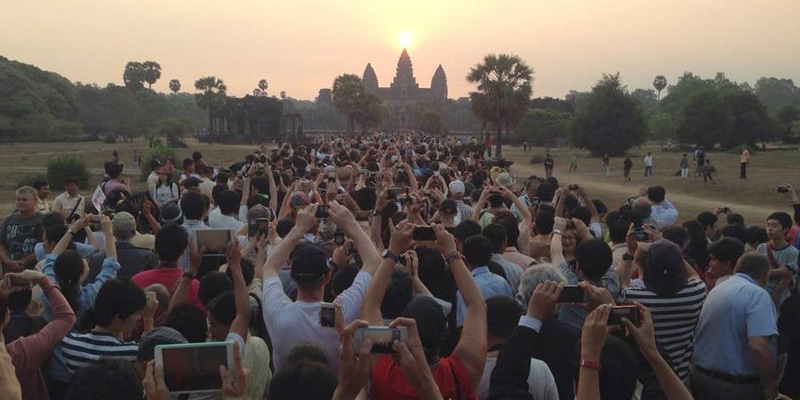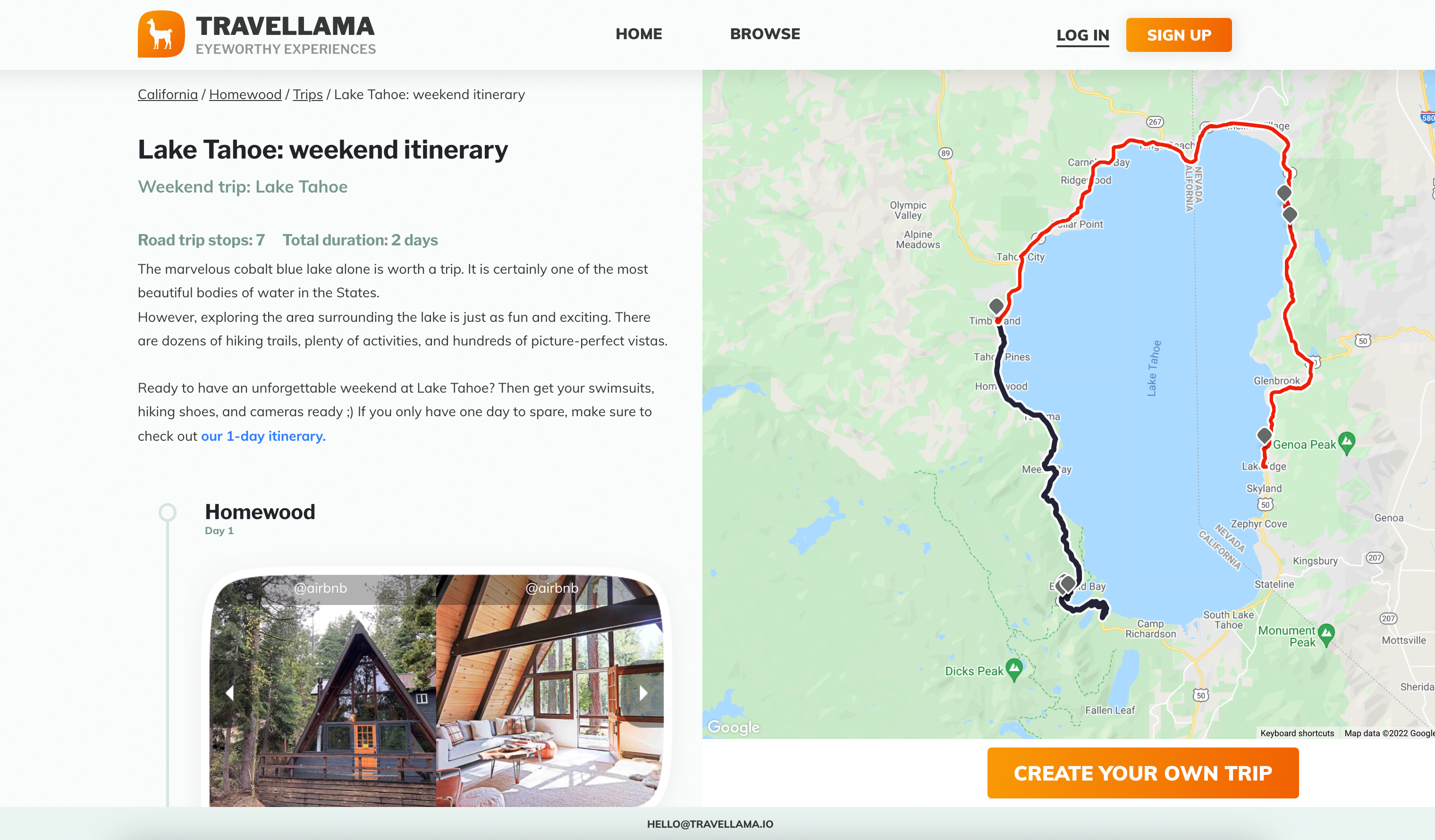TRAVELLAMA
I oversaw the design process and served as the product manager.
I partnered with a full-stack engineer friend to form a minimal viable team and investigate potential solutions to improve the travel experience through a new product.
At its maximum, there were five team members working on the project on a part-time basis. A digital marketing specialist helped to attract potential customers and I also mentored a junior designer throughout the project.
We created a minimum viable product and successfully acquired a paying customer, demonstrating the potential of the initial concept
FINDING A PROBLEM TO START WITH
Identifying the correct problem is a crucial step, it can either pave the way for long-term success or set the project up for failure.
Underestimating the significance of this initial stage when establishing the foundation of a company is a serious mistake that can have severe consequences.
This is the stage of exploration and understanding the needs of the customer, but it's essential to first identify who the customer is. If there is no clear customer, the effort should be put on finding one.

By focusing on road trips, we were able to expand our potential customer base
The key was to identify a homogeneous group and understand their needs through empathy. The customers would tell us about their problems, all by themselves. We just had to listen carefully.
It's essential to keep in mind that while the group should be homogeneous, the product should have the potential to expand beyond the core group. The goal is to create a scalable product, not one that is limited to a specific niche market.
We don’t want to get stuck on a tree.
We selected domestic social media active millennial travelers planning to go on a road trip in California as our target group.
WORKING WITH ASSUMPTIONS
As we began exploring ideas, one problem stood out as particularly relevant to millennial travelers who are active on social media.
If you observe the behavior of travelers, you may notice this recurring pattern yourself. At popular tourist destinations, it's common to see large crowds of people all taking pictures.
We’ve all been there, haven’t we?
We hypothesized that millennial travelers place a significant emphasis on finding photogenic locations when planning their trips
Our initial assumption was based on observations alone, but it is critical to not only observe but also actively listen to gain a more accurate understanding of the situation. Without this, there is a risk of forming a false impression.

Defining a problem based solely on observation is similar to answering the question "what is happening?" without understanding the underlying "why" behind it.
It is only by understanding the reasons why something is happening, that you can truly identify the root of the problem. Observing what is happening only provides a superficial understanding.
Through our research, we found that for many travelers the primary motivation for taking pictures is to capture memories to bring back home.
THE PROBLEM & THE PRODUCT
Through interviews with potential customers, we learned that the travel planning process can be very time-consuming and challenging. It can be difficult to consider all the variables and factors. We found that the more time spent on planning, the better the plan becomes, but it is essential to maintain flexibility and adaptability in the plan.
Additionally, we wanted to create a product that serves the needs of our customers, rather than turning our customers into the product. This further narrowed down the potential routes we could take in developing our product.
Based on the insights we gained from our research, we decided to focus on developing a solution that provides personalized travel itineraries. This approach addresses the pain points and needs of our target customer group, while also aligning with our goal of creating a product that serves the customer.
Our next step was to validate whether this was a solution that travelers actually needed. We found that it was relatively simple to determine.
ACQUIRING OUR FIRST CUSTOMER
Designing a product or solution is all about solving a problem, and the best way to determine if you have effectively solved a problem is to ask customers if they are willing to pay for your solution. This level of commitment from customers is a strong indicator that you have identified and addressed a genuine need in the market.
Capture a high-intent customer
With the goal of capturing the attention of millennial travelers planning road trips in California, we developed an ad campaign targeting popular tourist destinations in the state.
This campaign was designed to reach potential customers actively searching for information and planning their trips, and aimed to promote our personalized travel itinerary service as a solution to their planning needs.
Land the customer onto a pre-made itinerary
We've crafted detailed, yet generic itineraries and created webpages for each.
Our goal was to gauge interest in creating custom trips by inviting users to click the CTA button.
Offer to customize the itinerary for a fee
Once the CTA button is clicked, a pop-up offering appears.
The first customer acquired!
We obtained our first paying customer after using some of the advertising budget. While unit economics is a separate topic, what was crucial for this test was verifying the value for the customer.
Redirect back to the website
Once the payment is processed, a link to the form becomes accessible.
Redirect to a form
The button on the website leads to a Google form with questions to gather more information about the plans:
Create the itinerary manually and send it to the customer
To move quickly while testing the idea, it's necessary to be prepared to handle tasks manually. We didn't develop features that enable updating the itinerary; instead, we manually crafted the itineraries after analyzing the responses.
NEXT STEPS
It was exciting to identify a problem, formulate it as a product hypothesis, test it with actual users, and acquire one who found value in the solution we created and was willing to pay for it.
It was incredibly satisfying to create value from nothing.
At this stage, there is a significant amount of inherent ambiguity.
We have some initial momentum, but there are many things we still don't know.
If we talk to the customers and focus on their problems, we can make the process less stressful and time-consuming. The results will follow, and there’s no way around it.











